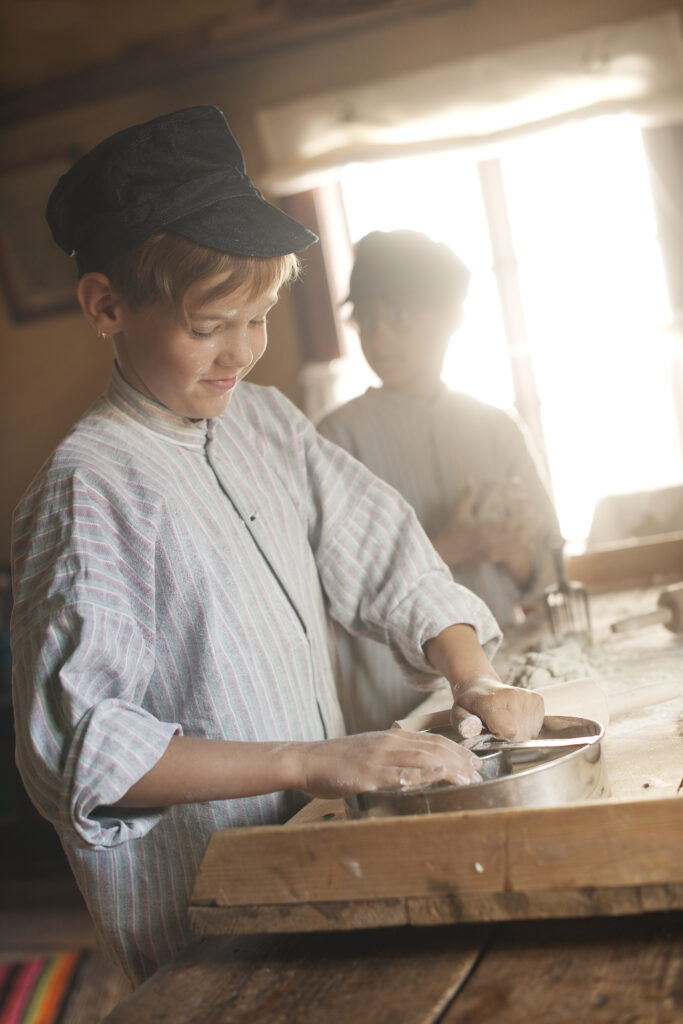”We do not inherit the Earth from our ancestors, we borrow it from our children.”
There are three things that are of great importance to Stundars: the crafts, the built heritage and the museum pedagogy. Of these three, the last one is what really brings life to the museum. The museum pedagogy is about the people, both about those who once lived in these cottages and crofts, and about those who visit the museum village today.
What is museum pedagogy? Topp
Everything we do at the museum to make the content, for example the cottages, the objects or the exhibition talk to our visitors is a kind of museum pedagogy. What do we want you to experience, learn and get revelations about during a visit? What do we want you to remember about this place when you go home? We can communicate through guided tours, signs, audio guides, activities, this website – or even through just talking with you for a while and discuss life a century ago. The target group of our museum pedagogy is not only kindergartens and schools, but everyone visiting our museum.



Mission: to give people roots Topp
The most important task of a museum is to be the collective memory of people. That is why there is museums at all. Part of this task is to transfer these memories to the next generation. Every year, Stundars is visited by thousands of pre-schoolers, pupils and students that explore, learn and understand more about the Ostrobothnian cultural heritage.
Through the informative, yet playful and entertaining pedagogical activities at the open-air museum, the emotional bond to this landscape and to the people who have lived here grows. It doesn’t matter if the young are born in the region or not, it they live here now or only visit. The feeling of belonging is strengthening their sense of identity, fortifying their sense of control over their own lives and help them to either find or grow new roots. These roots are vital anchors in a global, ever-changing and often rootless world, with challenges like pandemics, war, climate change, economic crises and mental illness. It gives people a special kind of safety and resilience to know that people have lived here for hundreds and hundreds of years, and we are now part of this chain. This is our home, and just like generations before us always have made it through all kinds of bad times – and always making the world a better place for the next generation – so can we. Everyone needs to feel included and that they belong, regardless of age, but it is especially important for children and young people.



Mission: to raise future museum visitors Topp
To visit a museum is an experience, and a large open-air museum like Stundars is bursting with chances to explore and learn. But to feel comfortable and welcomed at a museum, one needs to know how a visit is usually done, to avoid awkwardness and the feeling of being in the wrong place. Stundars is a comparatively very open, relaxed and permissive museum with hardly and glass showcases or vitrines. This is a good place to practice the museum etiquette, making the sum total of the cultural experience a positive one.
In a museum, visitors can also get inspired by and interested in subjects like history, archaeology, ethnology, folkloristics, art history and so on. The visit might lead to a new hobby, but it might also be a good summer job, or even the beginning of a professional career in memory organisations like museums, archives and libraries. This is important if we are to preserve our cultural heritage and tell future generations about it.



The museum pedagogy can be found in all parts of the operations at Stundars, but certain programmes and activities have a pedagogical design.
Programmes and activities for pre-schoolers, pupils and students



